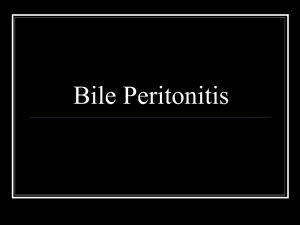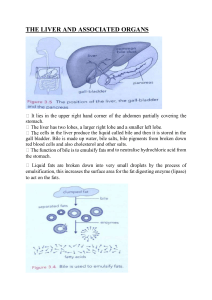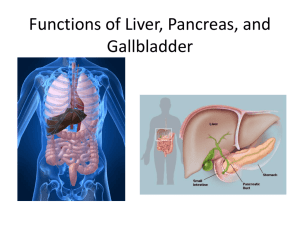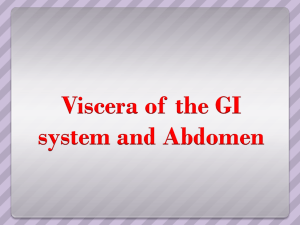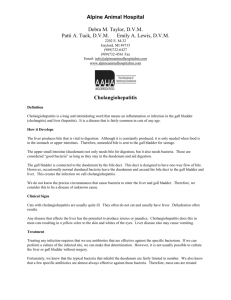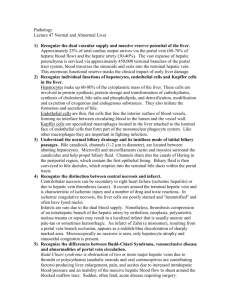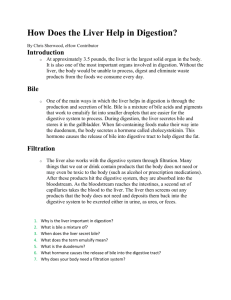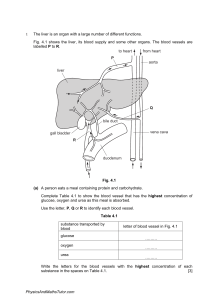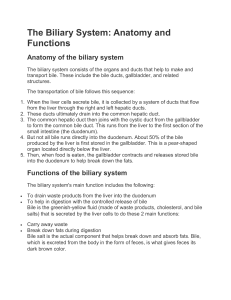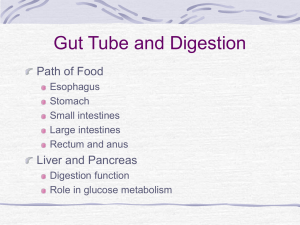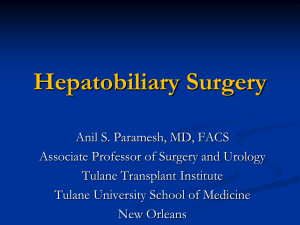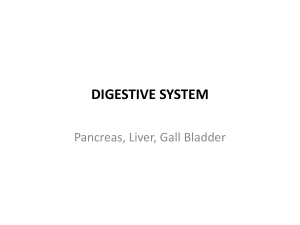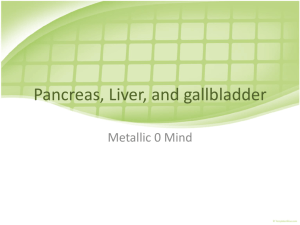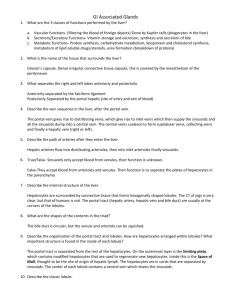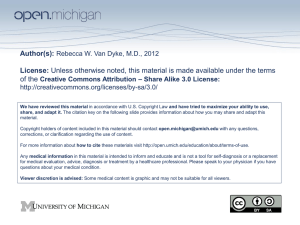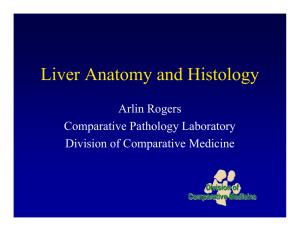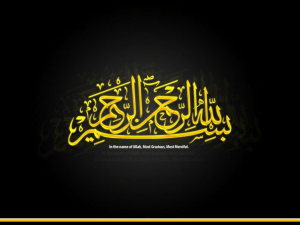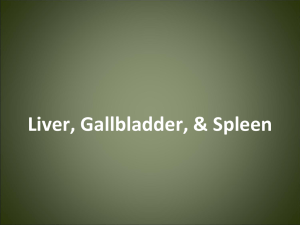LIVER - CHE Yr 1 January
advertisement
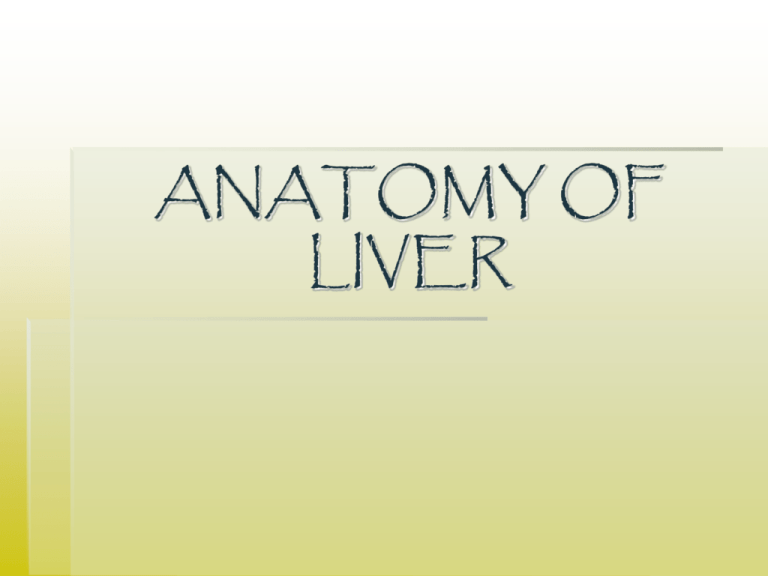
ANATOMY OF LIVER Lesson Overview The liver The gall bladder Bile The relationship with other intra-abdominal structures. Liver The liver is a major organ in some animals, especially vertebrates (and therefore humans). It plays a major role in metabolism and has a number of functions in the body including glycogen storage, plasma protein synthesis, drug detoxification. This organ also is the largest gland in the human body and lies beneath the diaphragm in the upper right portion of the abdomen. PARTS LOBES 4 PORTAL FISSURE – portal vein, hepatic artery, nerve fibres, hepatic ducts (R&L), lymph vessels Blood supply – hepatic artery and portal vein, hepatic veins Structure - hepatocytes Blood flow through Liver To Liver • Portal vein In Liver • Interlobular vein -> sinusoid-> • Central vein Leaving Liver • Hepatic vein –> Inf vena cava-> • Right atrium of heart Functions De-aminates amino acids – a)removes nitrogen, b)breaks down old nucleus- forming uric acid Converts glucose to glycogen De-saturates fat – so it can be used for energy Produces heat Secretes bile Stores vitamins (B12, A,D,E,K) & Fe Synthesises Vit A Metabolises ethanol (alcohol) Inactivates hormones Bile Bile is made in the liver and then goes to the gall bladder to get concentrated. Bile is then secreted by the gall bladder. Then it travels in the bile duct which opens into the duodenum. Bile juice contains bile salt that helps to emulsify fats, that is they break them down into small globules which are easily digested by the enzyme lipase present in the pancreatic juice. Gall Bladder The gallbladder (or cholecyst,) is a pearshaped organ that stores about 50 mL of bile (or "gall") until the body needs it for digestion. The gallbladder is about 7-10 cm long in humans and appears dark green because of its contents (bile), rather than its tissue. It is connected to the liver and the duodenum by the biliary tract. Composition of Bile

